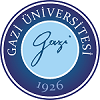
Send us your opinions, requests and evaluations.
Dear students,
Computer and Instructional Technologies Education departments, whose names are abbreviated as English CEIT were established in 1998 under education faculties of universities. The purpose of its establishment has been to train professionals who will support technology in other courses in primary and secondary education curricula, as well as training information technologies teachers. It was aimed that teachers who graduated from CEIT departments, like a counseling teacher, would support students and teachers in solving the technology problems they encountered in their lessons, but unfortunately this prediction - except for a very few private schools, has never came true. Instead, our graduates have been appointed as an information technologies teacher, mainly to primary schools for a long time. This way of emploment was sufficient for a long time because there was a high need for information technologies teachers in Turkey. However, the gradual decline in the need for information technologies teachers under the current conditions has made it necessary to investigate new employment areas for our graduates.
The different sectors and jobs in which a CEIT graduate - public or private - can work, are listed below against the data we obtained from the monitoring on graduated students.
A CEIT graduate might work;

Send us your opinions, requests and evaluations.